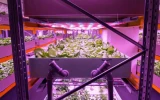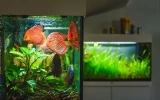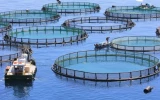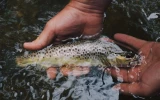How Much to Feed Fish in Aquaponics (with 13 Examples)
Feeding your fish in an aquaponic system requires a balance between meeting their nutritional needs and maintaining water quality. To keep your fish healthy and your aquaponic system thriving, it's important to know what your fish species require in their diet. So, how much should you feed your fish?
Most growers follow a simple rule of feeding their fish what they can consume in just five minutes and removing any uneaten fish feed to avoid unwanted water quality issues. The nutrient breakdown of fish food should generally consist of 32–45% proteins, 4–24% fats, 10–30% carbohydrates, 1-2.5% minerals, and 1-2.5% vitamins.
Some fish may require more protein, while others may thrive on vegetable matter or even live food sources. Yellow perch, for example, naturally feed on invertebrates and small fish but can also consume fish pellets and vegetables. Let's find out more about other fish species below.
Summary
- Consider the specific needs of your fish species and adjust the feeding schedule and quantity accordingly.
- Always keep an eye on your water quality and fish behavior, as these are important indicators of whether your feeding strategy is well-balanced.
- Regularly observe your fish and aquaponics system to help you identify any issues related to feeding habits and make necessary adjustments to maintain a healthy and thriving environment.
- Healthy fish and clear water will contribute to a highly productive aquaponic garden.
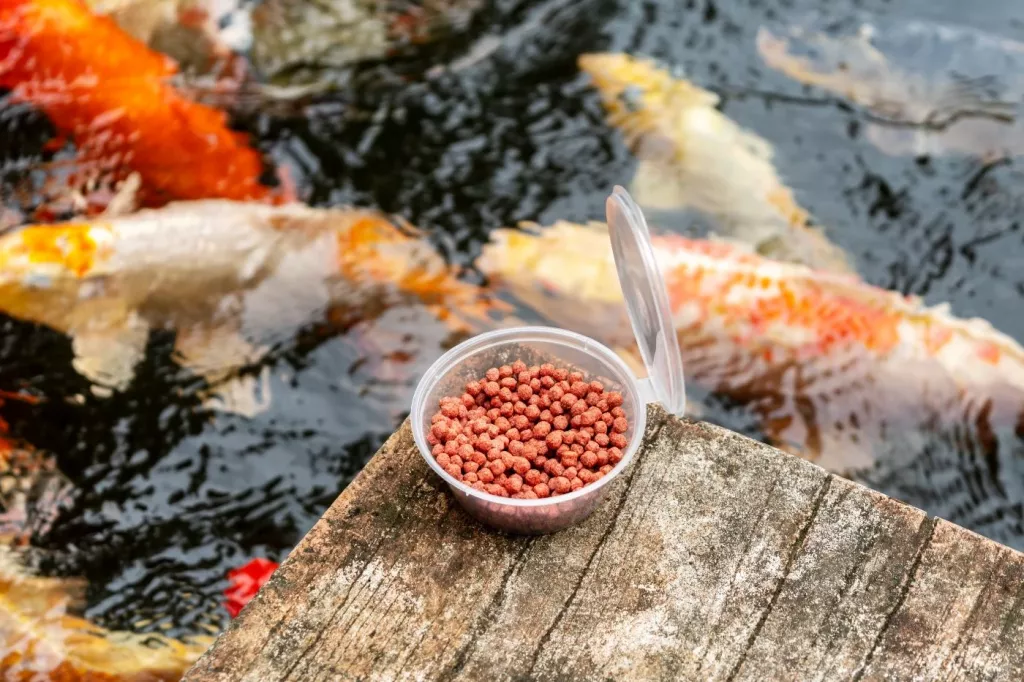
On this page:
Feeding Rates for Fish Species in Aquaponics
When choosing fish for your aquaponics system, it's essential to consider the dietary needs and optimal feeding rates of the specific fish species. Each fish species has unique requirements for growth and health.
In this section, we will discuss popular fish species for aquaponics systems and provide examples of their typical feeding rates. These are general guidelines, and it's essential to tailor the feeding rates to your specific system and environmental conditions. Monitor the growth and health of your fish to ensure they receive adequate nutrition.
Here's a summary table of feeding rates for popular aquaponics fish species:
| Fish Species | Feeding Frequency | Percentage of Body Weight | Recommended Protein Content |
|---|---|---|---|
| Tilapia | 2-3 times per day | 2%-3% | 18-20% |
| Koi | 2-4 times per day (water temp dependent) | 1%-2% | 25-35% |
| Catfish | 1-2 times per day | 1%-2% | 15-18% |
| Trout | 2-3 times per day depending on size | 1%-2% | 18-22% |
| Bass | 2-3 times per day (adults), multiple times per day (juveniles) | 1%-2% | 18-22% |
| Carp | 2-3 times per day | 1%-2% | 15-20% |
| Barramundi | 2-3 times per day | 1%-2% | 18-22% |
| Goldfish | 2-3 times per day | 1%-2% | 25-35% |
| Perch | 2-3 times per day | 1%-2% | 18-22% |
| Crappie | 2-3 times per day | 1%-2% | 18-22% |
| Bluegill | 2-3 times per day | 1%-2% | 18-22% |
| Shrimp | 2-3 times per day | 5%-10% | 18-22% |
| Crawfish | 2-3 times per day | 5%-10% | 18-22% |
Tilapia consume 1–2% of their body weight
Tilapia is a popular choice for aquaponics due to its hardiness and adaptability. They generally consume 1% to 2% of their body weight every day, and you can feed them two or three times a day, either manually or using an automatic fish feeder.
Koi require more feedings in warmer months
Koi are another popular choice for aquaponics systems, mainly for their beauty and resilience. Their feeding rates depend on water temperature, and they require more frequent feedings during warmer months. When water temperatures are above 70°F (21°C), feed koi two to four times per day, depending on their size, giving them only as much food as they can eat in 5 minutes.
Catfish feed should contain about 32% protein

Catfish are adaptable and fast-growing fish, making them suitable for aquaponics systems. Feed catfish two to three times per day, providing feed that contains about 32% protein. Monitor their size to determine proper feeding rates, as these rates will change as the fish grow.
Trout need 40–50% protein feeds
Trout thrive in cooler water temperatures and are a suitable choice for aquaponics systems in colder climates. Feed them high-protein feed (40% to 50% protein) two to four times a day, depending on their size.
Bass feed should contain at least 40% protein
Bass are carnivorous and require a high-protein diet for optimal growth. Feed juvenile bass multiple times per day and adult bass once or twice a day with a feed containing at least 40% protein.
Carp feed diet should include protein, carbohydrates, and fats
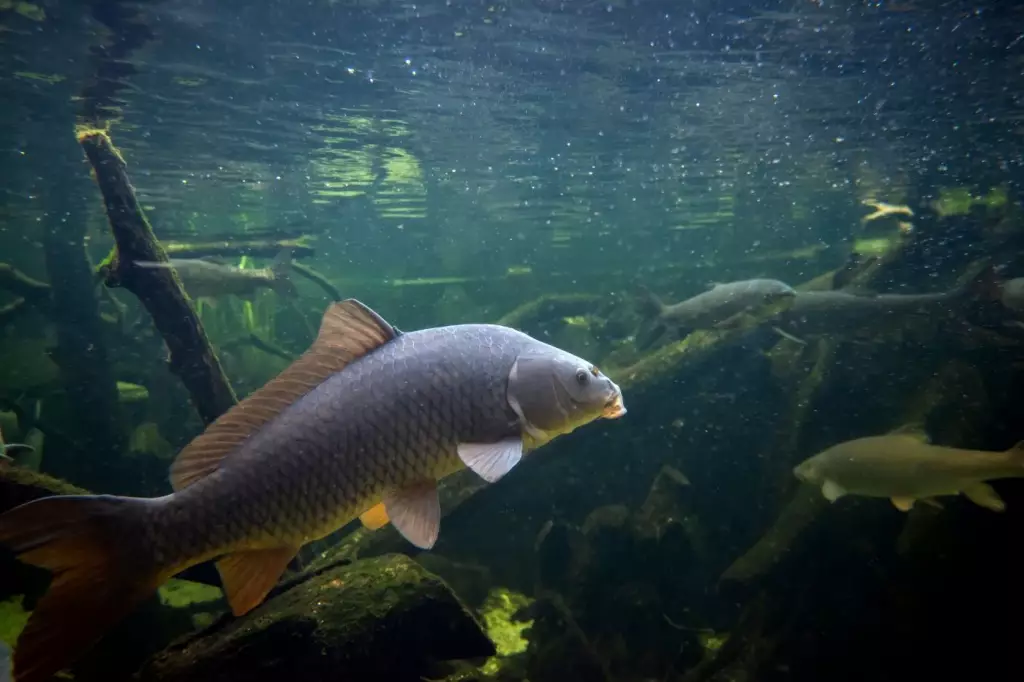
Carp are omnivorous fish that can thrive in a variety of environments, making them a versatile choice for aquaponics systems. Since carp can eat both plant and animal matter, their diet should include a good balance of protein, carbohydrates, and fats. Feed them once or twice a day, depending on their size and activity level.
Barramundi diet should contain at least 40% protein
Barramundi is a carnivorous fish that requires a high protein diet for optimal growth and health. They should be fed 2-3 times a day with a diet that contains at least 40% protein. It's important to monitor their feeding behavior and adjust feeding rates accordingly to prevent overfeeding and maintain water quality.
Goldfish require 25-35% feed protein
Goldfish are omnivores that require a balanced diet of protein and plant-based foods. They should be fed 2-3 times a day with a diet that contains 25-35% protein. Overfeeding can lead to health issues and poor water quality, so it's important to monitor their feeding behavior and adjust feeding rates accordingly.
Perch requires at least 40% protein
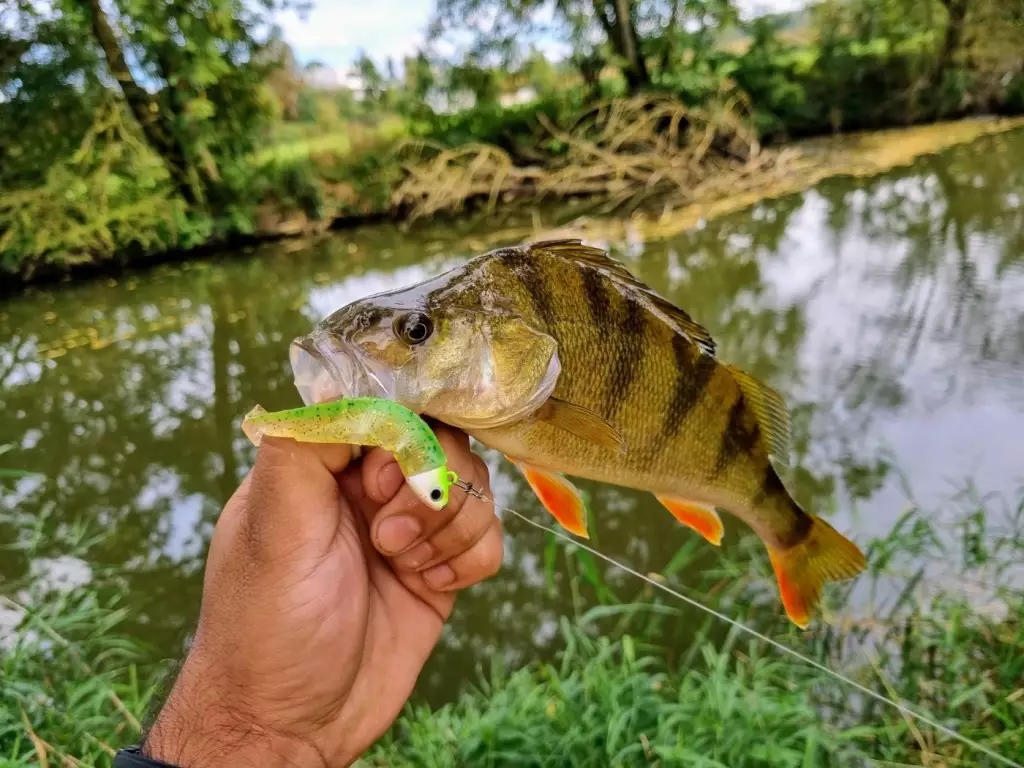
Perch is a carnivorous fish that requires a high protein diet for optimal growth and health. They should be fed 2-3 times a day with a diet that contains at least 40% protein.
Crappie need at least 40% protein
Crappie is a carnivorous fish that requires a high protein diet for optimal growth and health. They should be fed 2-3 times a day with a diet that contains at least 40% protein. Overfeeding can lead to health issues and poor water quality, so it's important to monitor their feeding behavior and adjust feeding rates accordingly.
Bluegill need 18-22% protein
Bluegill is an omnivorous fish that requires a balanced diet of protein and plant-based foods. They should be fed 2-3 times a day with a diet that contains 18-22% protein.
Shrimp feed should have 35–45% protein
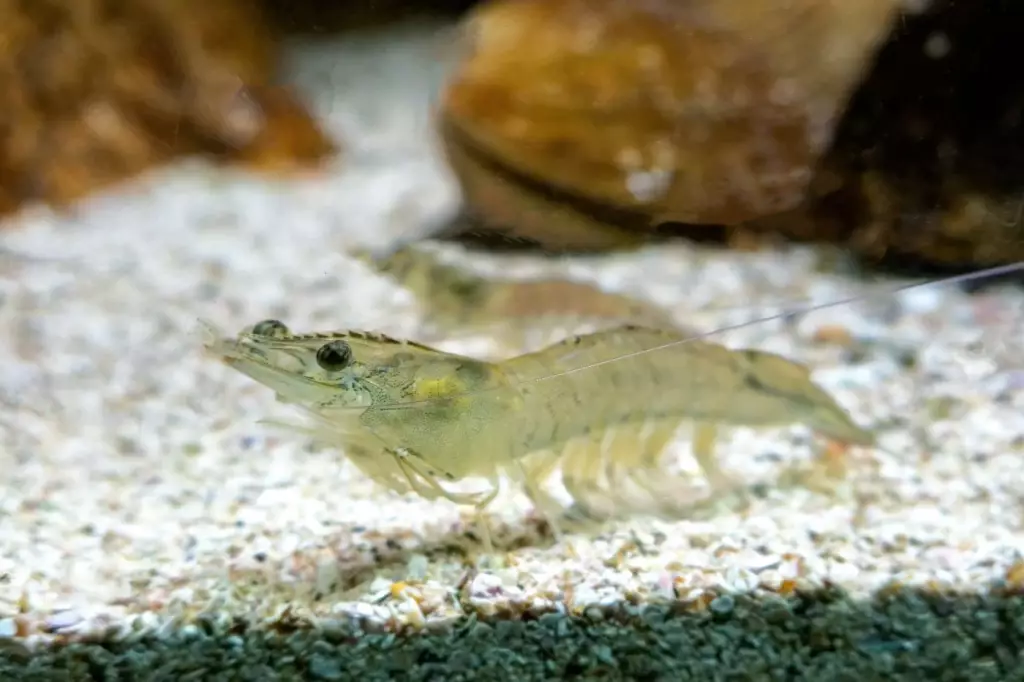
Shrimp are omnivores that require a balanced diet of protein and plant-based foods. They should be fed 2-3 times a day with a diet that contains 35–45% protein. Overfeeding can lead to health issues and poor water quality, so it's important to monitor their feeding behavior and adjust feeding rates accordingly.
Crawfish need 35–45% protein
Crawfish are omnivores that require a balanced diet of protein and plant-based foods. They should be fed 2-3 times a day with a diet that contains 35–45% protein.
How to Determine Fish Feeding Rates
Fish size and growth stage
Smaller fish will typically consume a higher percentage of their body weight in feed compared to larger fish. As a general rule, fish should be fed 1–2% of their body weight daily, split into two or three meals. Keep in mind that this percentage may vary based on the growth stage of your fish.
Tank size and density of fish
The amount of feed required in your aquaponics system also depends on the size of your tank and the density of fish within it. To calculate the daily feed rate, multiply the total fish biomass in the tank by the desired feed rate percentage (e.g., 2% of body weight). Here's an example:
- Tank size: 1000 liters
- Fish biomass: 500 kg
- Feeding rate: 2% body weight
Daily feed rate: 500 kg x 2% = 10 kg
This helps ensure that your fish receive the right amount of feed without overfeeding, which can lead to water quality issues.
Water temperature in your setup
Water temperature also affects the fish's feeding habits and metabolic rates. The fish tend to eat more when the water is warmer, while they eat less during colder seasons. Keep this in mind while adjusting the feeding rates for your fish in the aquaponics system.
When it comes to feeding your fish, also remember to follow the "five-minute rule." Give your fish only the amount of feed they can consume within five minutes, and remove any uneaten feed from the tank to avoid affecting the water quality.
Types of Fish Food
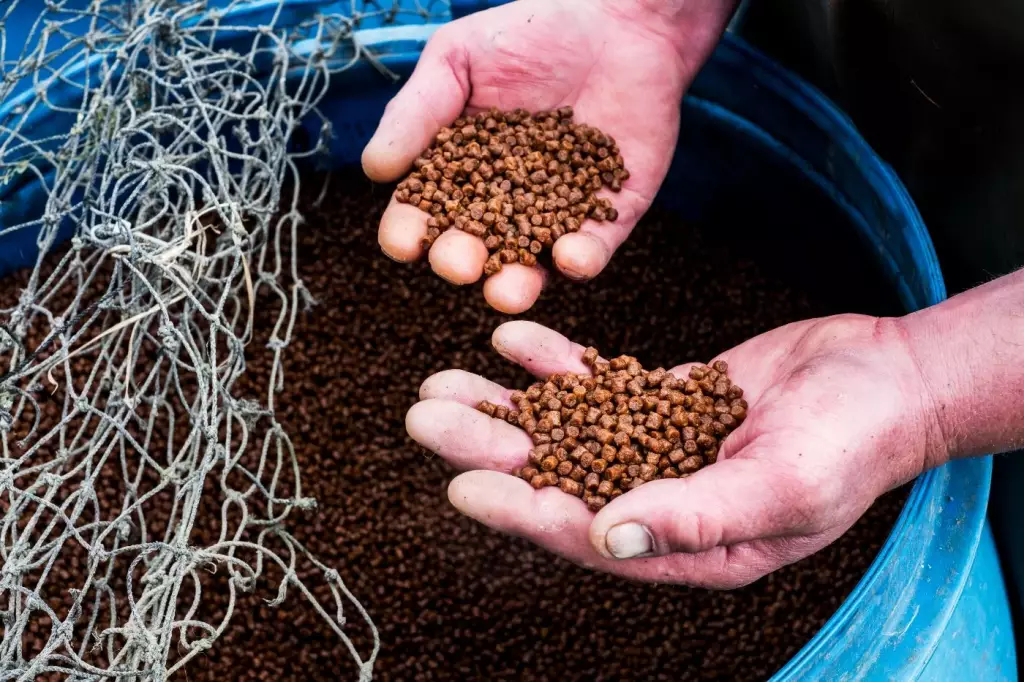
When feeding fish in aquaponics, it's essential to choose the right type of food for the species you have. This section will cover the different types of fish food available for aquaponics systems and provide examples of how they can be used.
Pelleted food is easy to manage
Pelleted food is a commonly used fish feed in aquaponics systems because it's easy to manage and provides a balanced diet for fish. Most pelleted foods contain a mix of proteins, fats, carbohydrates, minerals, and vitamins necessary for fish growth and health. Some examples of pelleted food are:
- Extruded pellets: These pellets are processed at high temperatures and pressures, resulting in a lighter, more digestible feed.
- Sinking pellets: Designed to sink in water, this type of feed is suitable for bottom-feeding fish species.
- Floating pellets: These pellets float on the water's surface and are ideal for fish species that feed at the water's surface.
Live and frozen food are more natural
Some fish species, especially carnivorous ones, prefer live or frozen food sources. These options can provide a more natural diet for fish, mimicking their feeding habits in the wild. Examples of live and frozen food include:
- Insects: Common insects used as fish food are dragonflies, wingless flies, and earthworms.
- Larvae: Aquatic larvae, such as mosquito larvae, can be an excellent source of protein for fish.
- Small fish and crustaceans: Some fish species, like trout and barramundi, require a diet rich in protein and can benefit from feeding on smaller fish or crustaceans.
Homemade feed you can make on your own
If you're interested in creating your own fish food, there are a variety of ingredients you can include to ensure your fish receive a balanced diet. it's important to choose the appropriate type of food for your fish species and monitor their feeding habits to ensure they're receiving the proper nutrition needed for growth and good health.
Examples of homemade feed ingredients are:
- Duckweed: A fast-growing aquatic plant that can be a great source of protein for omnivorous fish like tilapia.
- Vegetables: You can add leftover vegetables, like lettuce and peas, to your fish's diet, ensuring they receive essential nutrients.
- Worms and insects: As mentioned earlier, you can also grow your own worms and insects to provide a natural source of protein for your fish.
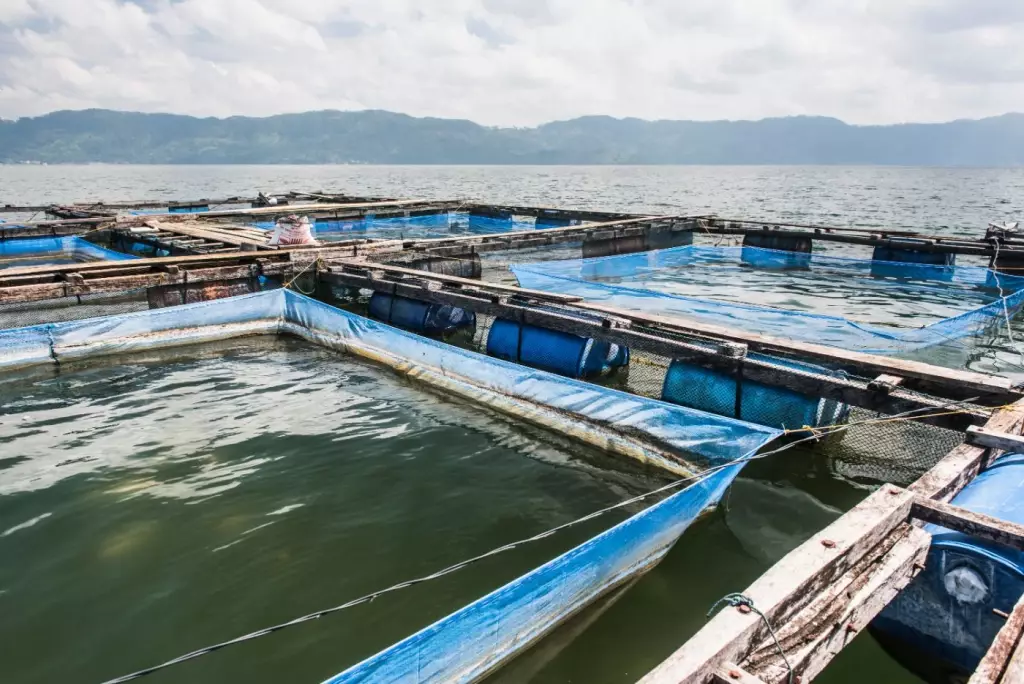
Adjusting Feeding Habits for Your Fish
As you maintain your aquaponics system, it's crucial to keep an eye on your fish and adjust their feeding habits accordingly. This will ensure that they remain healthy and provide nutrients to your plants efficiently. In this section, we'll discuss the signs of overfeeding and underfeeding to help you make the necessary adjustments to your fish's diet.
Signs of overfeeding your fish
Overfeeding your fish can lead to various issues in your aquaponics system. Keep an eye out for these indicators:
- Uneaten food: If you consistently see uneaten food at the bottom of the tank after 5 minutes, it's a possible sign that you're feeding your fish too much.
- Poor water quality: Overfeeding can lead to excessive waste, which can negatively impact water quality and harm both your fish and plants.
- Increased algae growth: Excess nutrients from uneaten food can result in more algae growth in your system.
- Lethargic fish: Overfed fish may become less active and exhibit signs of stress or illness.
To correct overfeeding, gradually reduce the amount of food you provide and monitor the response of your fish and system.
Signs of underfeeding your fish
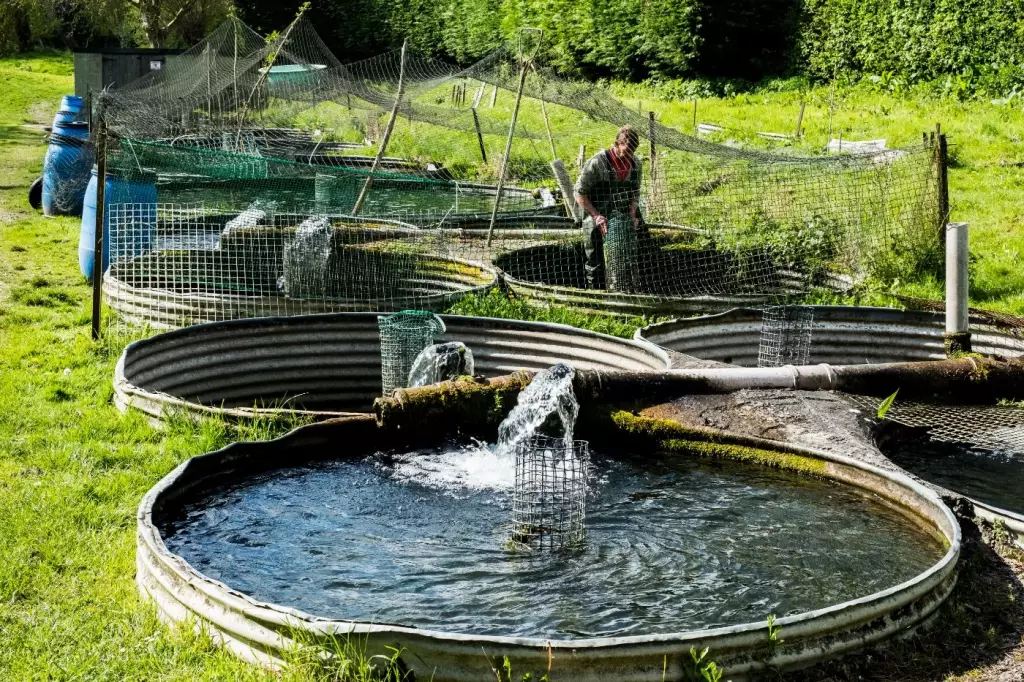
On the other hand, underfeeding can stunt fish growth and affect their overall health. Be on the lookout for these signs:
- Loss of body mass: If your fish starts to lose weight and body mass, this could indicate insufficient food intake.
- Aggression: Hungry fish may become aggressive towards their tankmates and fight for resources.
- Sluggish growth: Underfed fish will exhibit slower growth rates compared to adequately fed fish.
To combat underfeeding, gradually increase the amount of food you're providing and keep an eye on your fish for improvements in their behavior and health. Always remember to check each specific fish species' nutritional needs to make better adjustments. For instance, some fish require a diet with 32–45% protein content, while others may need more.
